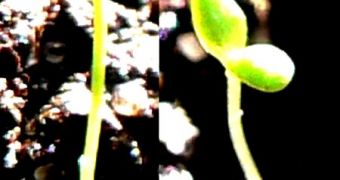It stands to reason that life on this planet would probably not have evolved without the atmosphere and the oceans, as evidenced through numerous researches over the years. But the process that allowed for the emergence of higher life – other than basic microorganisms – is largely overlooked, both in terms of importance and contribution. Photosynthesis, the method that plants employ to turn carbon dioxide and sunlight into oxygen and energy, is the main factor that allowed Earth to look like it does today, by replacing CO2 and other harmful gases in the atmosphere with high oxygen concentrations.
Arizona State University (ASU) School of Life Sciences assistant professor Jeffrey Touchman has taken it upon himself to conduct a new set of studies into the issue of photosynthesis evolution. At this point, he explains, there are numerous things missing from genetic plant records, and so the exact extent to which the process influenced our world cannot be accurately assessed. He believes that a clearer answer can be obtained by studying extremophiles, microorganisms that made a habit out of living in the most harsh, rough and extreme conditions that our planet has to offer.
“Knowing how photosynthesis originated and evolved is essential to obtaining the deep understanding required to yield improvements in bioenergy, agriculture and the environment,” Touchman, who is also an adjunct investigator at The Translational Genomics Research Institute (Tgen), says. Embedded within the genetic codes of these extremophile organisms, he believes, there may be traces of early evolutionary innovations, hallmarks that led the earliest life forms on Earth to developing oxygen-evolving high-energy photosynthesis.
"Oxygen is a central biosignature or fingerprint of life sought in the atmospheric spectra of planets beyond our solar system. Detailed molecular understanding of how photosynthetic microbes can push the boundaries of extreme-environment existence on our own planet will also fill important gaps in our current understanding of extra-terrestrial potential for oxygen-evolving photosynthesis,” Touchman adds. “Some microorganisms can survive interplanetary journeys cocooned inside rocks blasted off planets by comet and asteroid impacts. That rocky panspermia is an effective mechanism for spreading life within a planetary system,” adds the director of the ASU Beyond Center for Fundamental Concepts in Science, Paul Davies.

 14 DAY TRIAL //
14 DAY TRIAL //